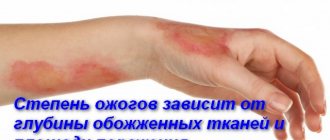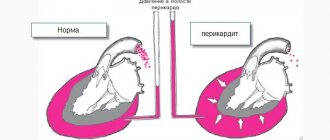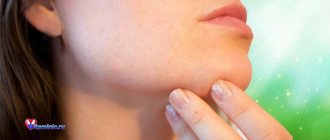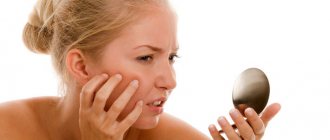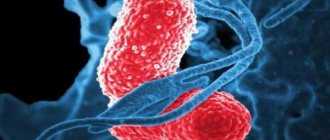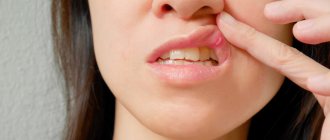Vitamin D has a positive effect on the circulatory system, regulates calcium metabolism, and prevents cancer. You can get this substance not only from food: its production is promoted by sunlight.
Those who often sunbathe on the beach or take sunbathing get a lot of this vitamin. However, an overdose can be harmful. Symptoms include the formation of kidney stones, inflammation of the gallbladder, attacks of nausea, constipation, and loss of appetite.
To avoid negative consequences, you need to know what amount of vitamin D will be considered normal. The exact dosage depends on the age and individual characteristics of the person.
Functions of vitamin D
Vitamin D has several components, up to D6. Its second name is calciferol. It is formed under the influence of ultraviolet radiation and comes from food and synthetic drugs.
Fat-soluble, accumulates in bones and fat reserves. It is unique in that it is a two-in-one substance: a vitamin and a hormone. In the human body, it “supervises” the cycle of calcium and phosphorus, forming the correct skeleton.
Additional functions of calciferol:
- prevents childhood rickets and osteoporosis in adults;
- produces leukocytes that remove foreign structures from the blood;
- by regulating insulin levels, it leaves the right amount of sugar in the blood;
- prevents diseases of the endocrine and immune systems;
- establishes contact between muscles and nerves.
Finally, it puts a barrier to cancer cells or inhibits their spread throughout the body.
Therapeutic measures
The decision on treatment methods is made by the doctor based on diagnosis. It is necessary to differentiate hyperparathyroidism from an overdose of vitamin D - in both cases, an excess of calcium levels in the blood is observed. If the dosage is exceeded, a deficiency of potassium, magnesium, phosphorus, and parathyroid hormone is noted. Increased excretion of calcium and phosphates in urine. The Sulkowicz screening test using oxalic acid for calcium gives a positive result.
X-ray images show calcium deposition in the epiphyses - the end parts of the bones that form the joint. The diaphyses of the bones, the middle part, are porous in the photographs; normally this should not be the case. A biopsy shows calcium deposits in the internal systems.
Therapy depends on the severity of the condition. In case of acute poisoning:
- gastric lavage with induction of the gag reflex;
- taking laxatives, sorbents;
- calling an ambulance.
Inpatient treatment includes:
- infusion therapy - drip administration of an isotonic solution of sodium chloride, Ringer's solution, the goal is to thin the blood to reduce the concentration of calciferol;
- administration of diuretics to remove excess fluid;
- glucocorticosteroids - prednisolone, hydrocortisone, to reduce the effect on bone tissue;
- ammonium chloride solution - to reduce the risk of stone formation.
For any type of overdose, antagonist drugs are prescribed:
- retinol, in a dosage of six to eight thousand international units;
- ascorbic acid, daily dose is 500 milligrams;
- cholestyramine – has the property of binding calciferol, used twice a day at a dosage of 500 milligrams per kilogram of body weight.
It is mandatory to prescribe a diet in which the following foods are excluded:
- fish, fish liver;
- chicken eggs;
- beef liver;
- milk, sour cream, butter.
Porridge cooked in water, vegetables, fruits, and unrefined grains are recommended. An important measure is protection from exposure to ultraviolet rays of the sun.
Folk remedies are aimed at eliminating irritation and insomnia. Use chamomile, valerian, dill water, tea with lemon balm. If anyone knows any interesting recipes, please share the information you have.
Vitamin D overdose and its causes
The first clinical manifestations of vitamin D overdose were described in the 1920s. Exorbitant indicators were noted after forty years. In the 1960s, there was widespread advertising for artificial feeding of newborns. A superdose of calciferol was considered an effective way to overcome rickets, so it was not skimped on in baby food.
Single moderate overdoses are not dangerous. Much worse is the chronic form, when the body is saturated with one and a half to double norms for months.
To avoid excess vitamin D, consider the following:
- The “reserve” is created by synthetic drugs and the use of foods saturated with calciferol. Therefore, the total vitamin requirement must be calculated by summing up all sources.
- Many mothers, who are terrified of rickets, in addition to fish oil, feed their children with enhanced vitamin doses.
- Bedridden patients, people suffering from obesity (fat-soluble vitamin D accumulate in fatty tissues), heart disease, kidney disease, pregnant women, and lactating patients are especially sensitive to an excess of calciferol.
- The daily requirement of calciferol can be obtained by walking for two to three hours in the sun. Therefore, in the warm sunny season, the amount of foods fortified with it should be limited.
- Even a super overdose is not dangerous for children suffering from rickets: their bodies always do not have enough of this component.
Natural fish oil or cod liver is an ideal way to safely saturate the body. There are vitamins A and D here. The first does not allow an overdose of the second.
First aid for overdose
When taking an ultra-high dose of vitamin D at once, you must:
- Rinse the stomach (drink 1-1.5 liters of water or a weak solution of potassium permanganate and induce a gag reflex).
- Take a saline laxative (Magnesium sulfate).
- Take an adsorbent (Enterosgel, Polysorb, Polyphepan according to the scheme or Activated Carbon at the rate of 1 tablet per 10 kg of body weight).
If symptoms of intoxication develop during systematic use, you must immediately stop the drug and consult a doctor.
Symptoms of vitamin D overdose
The main danger of vitamin D hypervitaminosis is an increase in the presence of calcium and phosphorus in the blood. The result is calcification of the liver, lungs, kidneys, blood vessels, and heart. The degree is determined by the overdose: mild, acute, chronic.
Mild degree
The first alarming “markers” of excess vitamin D:
- digestive problems; range - from zero appetite plus constipation to vomiting accompanied by diarrhea;
- breathing difficulties (inability to breathe deeply, causeless shortness of breath);
- aching joints;
- headache;
- the muscles are constrained by a cramp;
- hypertension occurs;
- the body is feverish.
As soon as the dosage is normalized, everything goes away on its own.
Acute overdose
Occurs with a single dose that exceeds the recommended dosage by several times. Among the first signs:
- loss of appetite to zero;
- nausea followed by vomiting, diarrhea;
- their result is dehydration of the body (drying of the skin, mucous membranes, thirst increases);
- the heart works sluggishly (the skin becomes blue, the pulse slows down);
- pressure rises;
- cramps bother me all the time;
- urination is frequent and copious.
It could end in fainting.
Chronic form
Appears with prolonged “infatuation” with calciferol. With an overdose of vitamin D, symptoms in adults are as follows:
- a person gets tired quickly, has a consistently bad mood, irritability goes off scale;
- sleep disturbance;
- nausea, vomiting, no appetite, losing weight;
- muscles cramp, tics; lower back ache;
- swelling appears;
- the skin breaks out in a rash;
- digestion is completely upset;
- the risk of bone fractures increases.
- General immunity decreases, a healthy person becomes sick.
Particularly dangerous symptoms
Chronic overdose of component D provokes calcification of the body:
- accelerated stone formation in the kidneys, causing them to fail;
- the heart muscle “petrifies”;
- cerebral vessels narrow;
Calcification can affect other organs, which is fatal to humans.
Overdose in children
The child’s body reacts to the permanent intake of large doses with the following manifestations:
- the skeleton is formed abnormally (especially tubular bones), osteoporosis is likely, increasing fractures;
- hair grows slower;
- the skin becomes gray and dry;
- growth is inhibited;
- the child is thirsty all the time;
- pulse is slow.
In case of acute vitamin D poisoning in children:
- constant vomiting, thirst;
- indigestion;
- restless sleep;
- cramps, spasms;
- tearfulness, capriciousness.
Chronic overdose is especially dangerous for children because their bodies cannot fight toxins as effectively as an adult.
The main symptoms of a vitamin D overdose: high blood pressure, poor sleep, vomiting, nausea, intense urination, diarrhea, heart problems.
What is the danger of hypervitaminosis in children?
Vitamin D intoxication in adults and children has both common features and differences. Vit poisoning D in some cases is a consequence of parental carelessness when dosing the vitamin or the child’s uncontrolled access to the place where medications are stored. An overdose of vitamin D3, prescribed for the prevention and treatment of rickets, causes in children:
- digestive disorders, loss of appetite;
- physical inactivity;
- abnormal skeletal development, excessive bone growth;
- dehydration and weight loss;
- early closure of the fontanel;
- blindness (due to calcium deposits in the cornea of the eye);
- clinical-tonic convulsions, muscle rigidity;
- susceptibility to colds and other inflammatory diseases.
Acute overdose develops in children under one year of age who have taken the drug in high doses for at least 2 to 3 weeks. The development of chronic intoxication occurs within about six months when vitamin D3 is consumed in doses slightly exceeding the daily requirement.
Important: There is a possibility of individual intolerance to vitamin D in infants and preschool children.
Video advice from the Union of Pediatricians of Russia will help parents become familiar with the consequences of insufficient or excessive intake of vitamin D:
Daily vitamin requirements
The daily amount of the substance is determined by gender, age, physical condition, and other circumstances (mcg):
| Children, teenagers (age years) | |
| 0-3 | 7,40-10,10 |
| 4-10 | 2,51-4,32 |
| 11-18 | 4,52-8,32 |
| Adults of both sexes (age years) | |
| 19-59 years old | 10,50-14,50 |
| 60+ | 15,51-21,51 |
| Special cases | |
| pregnancy | 15,01-20,1 |
| breast-feeding | 13,01-19,01 |
In pregnant women, an increased dose of this drug is spent on the developing fetus. During breastfeeding, the child’s body receives an excess of component D through milk to prevent developmental anomalies, especially rickets.
Water-soluble and fat-soluble vitamins
Vitamins are divided into 2 large groups - water-soluble and fat-soluble vitamins. The first includes B vitamins, vitamin C and P. The second includes four compounds - vitamins A, D, E, K. The diet should contain vitamins of both groups. Fat-soluble vitamins can be deposited in the body, stored in reserve in the liver and adipose tissue, and are well absorbed in the company of fats. When in excess, water-soluble vitamins are simply excreted from the body. Fats are not needed for their absorption. Interestingly, scientists have long synthesized water-soluble analogues of fat-soluble vitamins.
Prevention of vitamin D overdose
To ensure that the body does not suffer from vitamin abundance, you need to consider the following:
- Sources of the substance are sunlight, food, synthetic drugs.
- Vitamin preparations are taken only with a doctor's prescription. The doctor will take into account their compatibility with other medications prescribed to the person, his state of health, and other individual circumstances of the patient. Especially a small child. If there are no obvious signs of rickets, the doctor will not prescribe vitamin D.
- If you want to take the drug yourself, first be sure to look at the dosage of the capsule or tablet. Study the attached instructions for correct use.
- The substance is synthesized by sunlight, so long walks in the sun are undesirable. However, you shouldn’t neglect them either.
- Lack of calciferol is an “occupational illness” of people who constantly work night shifts, lead an active nocturnal lifestyle, or live in the Arctic Circle. They also lack sunlight.
- Unless absolutely necessary, vitamin D should not be taken in late spring and summer, when it is constantly warm and sunny outside.
In what doses is the vitamin harmful?
To diagnose and monitor the dosage of vitamin D, it is recommended to give the child’s urine a Sulkovich test. In infants, this analysis is one of the main ones in pediatrics. It is based on the visual cloudiness of urine when combined with a solution containing oxalic acid and indicates the calcium content in the urine. The test is usually performed using morning urine collected on an empty stomach. Based on the results of the study, the doctor determines the need for additional vitamin D in the baby’s diet and its dosage.
It should be taken into account that the body produces it on its own, so if you take vitamin D in a prophylactic dose during the sunny season, an overdose may occur. Symptoms in children occur both with constant excess and with one-time poisoning. Even one extra drop for a baby can negatively affect his health.
Overdose of multivitamins or vitamin-mineral complexes
Different vitamins may contain different doses of individual components. Some multivitamins contain an increased or even therapeutic dose of individual vitamins in 1 tablet. And the side effect when taking a large dose of multivitamins will be determined by the sum of the side effects of all components. It is difficult for parents to independently assess the possible consequences of such a situation. Therefore, if a child has eaten several multivitamin tablets or vitamin-mineral complexes (especially those intended for adults), you need to carry out all the actions recommended for drug poisoning, described below.
Sources of vitamin
The main part of vitamin D is synthesized under the influence of ultraviolet (sun) rays in the skin from provitamin. A much smaller amount of it enters the body from food.
The highest content of this nutrient is distinguished by:
- butter;
- cod liver;
- fish fat;
- chicken egg yolk;
- red and black caviar;
- salmon and sprats (canned);
- pig, chicken and cow liver;
- fish (salmon, herring, flounder, mackerel, tuna, chum salmon, pink salmon).
However, these products are prohibited for babies under one year of age, and their main diet is breast milk or formula. But still, both in the adapted new formulas and in human milk, the vitamin content is sufficient for a child of the appropriate age. Thus, the content of calciferol in breast milk is 0.88 µg/100 ml.
The most effective method for infants to get vitamin D is morning walks in the air. Moreover, being in the open sun is not at all necessary. Being in partial shade also ensures its accumulation. It must be remembered that window glass allows heat to pass through, but prevents the penetration of the bulk of ultraviolet rays.
The production of calciferol depends on the color of the baby’s skin, that is, the lighter the skin, the greater the amount of vitamin D is synthesized and the less time the baby can be in the sun.
Treatment
Therapy for excess vitamin D is aimed at reducing the penetration of the compound into tissues and reducing intoxication symptoms in both children and adults. It is necessary to exclude foods rich in this substance from the diet:
- dairy products,
- eggs,
- fish,
- fish fat,
- liver.
It is necessary to carry out infusion therapy in order to more quickly wash out the substrate from the blood. It is recommended to take vitamins B and C, as these compounds promote accelerated elimination of excess calciferol.
In a hospital setting
With severe signs of intoxication, there are indications for hospitalization. Therapy is carried out according to the standard:
- In case of mild poisoning, the patient is given vaseline oil, which slows down the absorption of calciferol.
- In order to speed up the elimination of excess calcium, diuretic therapy (Lasix) is prescribed.
- To eliminate ionic imbalance, asparkam is prescribed.
- In case of moderate poisoning, vitamin A, B and C are added to therapy.
- Verapamil is prescribed, it reduces the severity of calcification.
- Phenobarbital, which converts the substrate into deactivated forms, is recommended.
- In case of severe poisoning, medications are administered parenterally. Glucocorticosteroids and infusion solutions are used.
Hypervitaminosis D forms and signs
According to the speed of development of the intoxication process, hypervitaminosis in children is divided into two forms:
- acute, arising from high doses of a substance that was taken for therapeutic and prophylactic purposes for 2 to 10 weeks;
- chronic, the development mechanism of which is associated with long-term use of fortified preparations (from 6 to 8 months).
Acute vitamin D intoxication is more common in infants in the 1st half of life. The following signs will help the mother recognize it: the baby’s lethargic state, indifference to relatives and toys, loss of appetite, thirst, constipation, and repeated cases of vomiting. The nervous system reacts to an excess of the substance with convulsions.
In the chronic form of the disease, the clinical picture is less pronounced, but it has its own symptoms:
- nausea and vomiting;
- insomnia;
- pain in the bones and lower back;
- frequent urination;
- weight loss up to dystrophy;
- increased calcium concentration in urine;
- sagging and dry skin, discoloration to a gray-yellow tint;
- early contraction of the large fontanelle and sutures connecting the flat bones of the skull.
X-rays show calcium deposits in growth areas and increased bone density. Anomalies of the cardiovascular system are expressed by muffled tones and systolic murmur. The ECG shows serious pathological changes.
Symptoms of Vitamin D Poisoning
The first sign of hypervitaminosis is a persistent lack of appetite. If you do not stop taking the vitamin, nausea and vomiting occur, weight gain stops, and even weight loss is possible. Most children experience restlessness, and some experience lethargy and drowsiness. Characterized by severe thirst as a consequence of severe polyuria. One child we observed greedily drank water from the bath in which his mother bathed him. Almost always there are more or less pronounced signs of dehydration with a decrease in turgor and blueness under the eyes. Because of these phenomena, the primary diagnosis is often toxicosis or toxic dyspepsia, although constipation is more common than diarrhea. The urine contains proteinuria, leukocyturia and cylindruria. This serves as the basis for the second diagnostic error - the doctor may mistake these phenomena for pyelitis or pyelonephritis.
In 80% of cases, hypercalcemia is detected - from 120 to 270 mcg/l; There is a high content of residual nitrogen. Increased blood pressure.
Folic acid
The daily requirement for children of the first year is up to 50 mcg per day, 1-3 years - 70 mcg, 3-6 years - 100 mcg, 6-10 years - 150 mcg, from 11 years and older - 200 mcg. The safety threshold exceeds the daily requirement by 100 times and is 7 - 20 mg. In adults, folic acid is used in therapeutic doses of up to 5 mg per day. Further increases in the dose lead to disorders of the nervous system (dizziness, headaches, insomnia) and gastrointestinal tract (dyspeptic symptoms). Folic acid may cause allergic reactions.
Calciferol deficiency
A lack of vitamin in infants is fraught with metabolic disorders in muscle and nerve cells, and there is a problem with the absorption of calcium. As a consequence, the development of rickets is observed.
Rickets is a disease that develops due to calciferol deficiency in infants and represents damage to organs (primarily the skeleton) due to disturbances in calcium-phosphorus metabolism. In older children and adults, a lack of vitamin D is fraught with osteomalacia and osteoporosis, which leads to skeletal deformities and frequent fractures.
There are various factors among the reasons.
Estrogenic, that is, the baby’s lack of exposure to fresh air and a small amount of ultraviolet radiation reaching the skin (babies born from October to April, residents of the Arctic). There is a lack of phosphorus, vitamin D and calcium in the foods consumed or artificial feeding (more often in the case of using unadapted mixtures). Also important:
- multiple pregnancy;
- prematurity of the child;
- the mother has short intervals between pregnancies;
- various pathologies during pregnancy that cause nutrient deficiency;
- mother's age is under 17 and over 40;
- poor infant care and unsuitable living conditions.
But there are also endogenous factors:
- defect of receptors that perceive vitamin D;
- malabsorption syndrome and problems with biliary excretion, leading to impaired absorption of calcium, vitamin D and phosphorus in the intestines;
- disturbances in the synthesis of calciferol in the kidneys/liver due to genetic abnormalities or diseases of these organs.
The first signs of vitamin D deficiency in infants usually appear by 2-3 months. Earlier development of the disease occurs only in very premature babies.
Lack of vitamin D in infants manifests itself as symptoms:
- excessive sweating, especially when feeding and sleeping;
- itching of the scalp and, as a result, “wiping” the hairs (baldness) on the back of the head;
- behavioral changes and irritability;
- decreased muscle tone;
- sleep disorders;
- loss of appetite;
- convulsions.
If appropriate measures are not taken, the disease subsequently progresses with skeletal deformation, disruption and slowing of tooth growth, and problems in the internal organs. In this case, a lack of vitamin D in a child, the symptoms of which relate mainly to the bones, manifests itself as follows:
- deformation of the pelvic bones;
- depression in the sternum (“shoemaker’s chest”);
- lengthening of the skull, enlargement of the frontal and parietal tubercles (“tower skull”);
- o- and x-shaped curvatures of the leg bones;
- thickenings at the junction of cartilage with the ribs (“rachitic rosary”).
If signs of rickets are detected, parents should immediately contact their pediatrician. Diagnosis will require a blood test with data on the concentration of calcium, alkaline phosphatase and phosphorus, a Sulkovich urine test and, in some cases, a CT scan or x-ray. Based on the data, the doctor chooses the most appropriate treatment with vitamin D preparations in each case.
Prevention
There are simple tips that can help young parents deal with the situation and prevent an overdose of the vitamin, or reduce the consequences:
- Without any signs of rickets and consulting your doctor, you should not give medications that are a source of vitamin D. It would be beneficial to diversify the children's menu with foods rich in this substance (for example, liver, yolk, fish oil, etc.);
- Follow the instructions for use of the medicine and your doctor's instructions exactly;
- If an excess of cholecalciferol is detected, stop taking the drug and temporarily exclude from the diet drinks and foods that contain calcium - eggs, cottage cheese, cow's milk;
- Include in your daily diet foods that contain vitamins C, A, and E.
The most effective and accessible recommendation that a pediatrician can give is frequent and long walks with the child, especially in warm, sunny times.
An overdose of vitamin D can be avoided if, having identified the primary symptoms of the disease, you immediately limit the consumption of foods that contain this substance and refuse foods rich in calcium. At the same time, you should try to spend less time in the sun. In summer, it is recommended to wear light, well-covered clothing.
Drinking water is important. You should try to drink it as much as possible. The water should be simple, not containing any impurities. You need to drink at least 2 liters daily.
It is recommended to do this half an hour before meals, and then 1 hour after finishing the meal. You can drink every time, for example, 1-2 tbsp. To prevent an overdose of vitamin D, it is important to try not to exceed the daily requirement of this substance.
Doctors consider a dose of 700 IU per day safe for adults, but not for older people. The dosage increases slightly for those whose age exceeds 50 years. In this case, a dose of 900 IU per day is considered safe. It is 200 IU higher for pregnant women.
Excess vitamin D: sleep, constipation, infections
Meanwhile, not only a deficiency, but also an excess of vitamin D is not beneficial for the body. It leads to calcium retention in the body and its deposition in organs and tissues, which interferes with their function. Excess calcium also disrupts the functioning of the heart and nervous system.
With mild hypervitaminosis, loss of appetite, irritability, poor sleep, thirst and increased urine output, constipation, joint pain, and muscle pain are noted. As hypervitaminosis becomes more severe, the above symptoms include vomiting, palpitations, decreased activity of the enzyme alkaline phosphatase, and an increase in the level of phosphoric and citric acid salts, cholesterol and proteins in the blood.
In severe poisoning, vomiting becomes frequent, weight loss is significant, dehydration develops, convulsions, shortness of breath, arrhythmias are possible, a decrease in the concentration of magnesium in the blood, and infections caused by bacteria often occur. In some cases, depression of the nervous system to the point of coma is possible. For hypervitaminosis D, calcium removers, petroleum jelly, vitamins E and A and other drugs are used.
Thus, troubles await us not only with a shortage, but also with an excess of vitamin D, and the body needs a certain amount of it for coordinated work. The level of this substance in the blood can be determined using a special analysis. And knowing the norms of the vitamin, anyone can independently regulate its intake into their body by changing their diet or taking pharmacy vitamin D.

